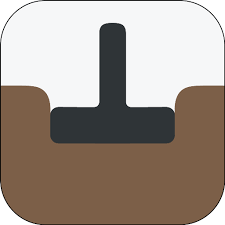
Foundation design is a specialised engineering discipline.Many architects and clients think foundation or geotechnical engineering is the scope of a structural engineer.Geotechnical by itself is a specialisation like structures.I had mentioned about this in one of my previous blogs.
Here I am writing four different tips that would be handy for any aspiring structural engineer.
These are points that you need to know and soil consultant may not even indicate this on his report as these are structural points and in structural codes.
1. FACTORED OR UNFACTORED LOAD FOR FOUNDATION SIZING?
Many students ask this question. Should I use factored load or unfactored load for the sizing of design of footings?
Now what do you mean by design of footing? It is all about ensuring the strength of the footing and a bit more.Design includes the sizing of footing!
This sizing of footing which is the first step is based on unfactored load.The reason is that the SBC provided by the soil consultant is down factored.What does this mean? If the soil report has provided you with a SBC of 200kN/m2,the actual capacity is 600 and it is reduced to 200 by downfactoring it by 3 for safety.Now by logic when you already have a safety by reducing the SBC, we dont need to have a safety factor for loads aswell.Many times engineers at entry level miss to appreciate this fact and I thought its worth mentioning the reason.
Note : Unfactored load ends with sizing.After that all design for moments and shear should be based on factored values.
If you want to know more about this,you can see a video that we have in our foundation design course page
2 . DESIGN FOOTING FOR ONLY GRAVITY LOADS ?
This is another question asked by many young engineers. It is not enough to consider only gravity loads for sizing of footings.We have to consider all the combinations and probably choose the one that give you the largest footing size.Many a time,seismic or wind may not result in more column loads than gravity loads for smaller buildings. The total load from gravity may be higher.However it all depends on your support considerations.If the base is fixed then higher moments in the support can result in larger footing size than that for gravity loads.
Some of you may have the question now -Should the foundation be pinned or fixed? This we will discuss in another blog another day. Or you can take up our course on building design
3. ADDITIONAL POINT TO CONSIDER FOR SEISMIC LOADS
Reading the heading,atleast some will be thinking there is some thing more critical coming. However here am talking about a relaxation that code is providing you. When sizing your footings for seismic combinations,code allows you to enhance your SBC.
This is mentioned in Cl.6.3.5.2 IS 1893 : 2016
Please see the video for more understanding.
4. FORCE ENVELOPE vs COMBINATION REACTIONS
This point is far more important. Many fresh engineers ask this question too
Can we not take the envelope of forces and design for the maxium reaction.
This can be done if the base is pinned and not if the base if fixed.If the base is fixed,we will have a vertical reaction and moments to consider which makes the sizing an interactive process.What I mean is where you have the maximum vertical load necessarily need not have the maximum moment.You will end up mixing this up and you get a unrealistic larger size. Please see the video.
Minimum Top reinforcement in Isolated footings
I have another post in the forum on the need of minimum top reinforcement in isolated foundations.
You can join that discussion here.
SUMMARY
There are hundreds of similar points and some practical points like how to decide the number of bore holes.Practice makes us perfect. It is mandatory that one gain enough experience working or training with an established consultant.Mere software understanding is not adequate for being a successful engineer. The sooner one realise this,the earlier she becomes independent.

Comments